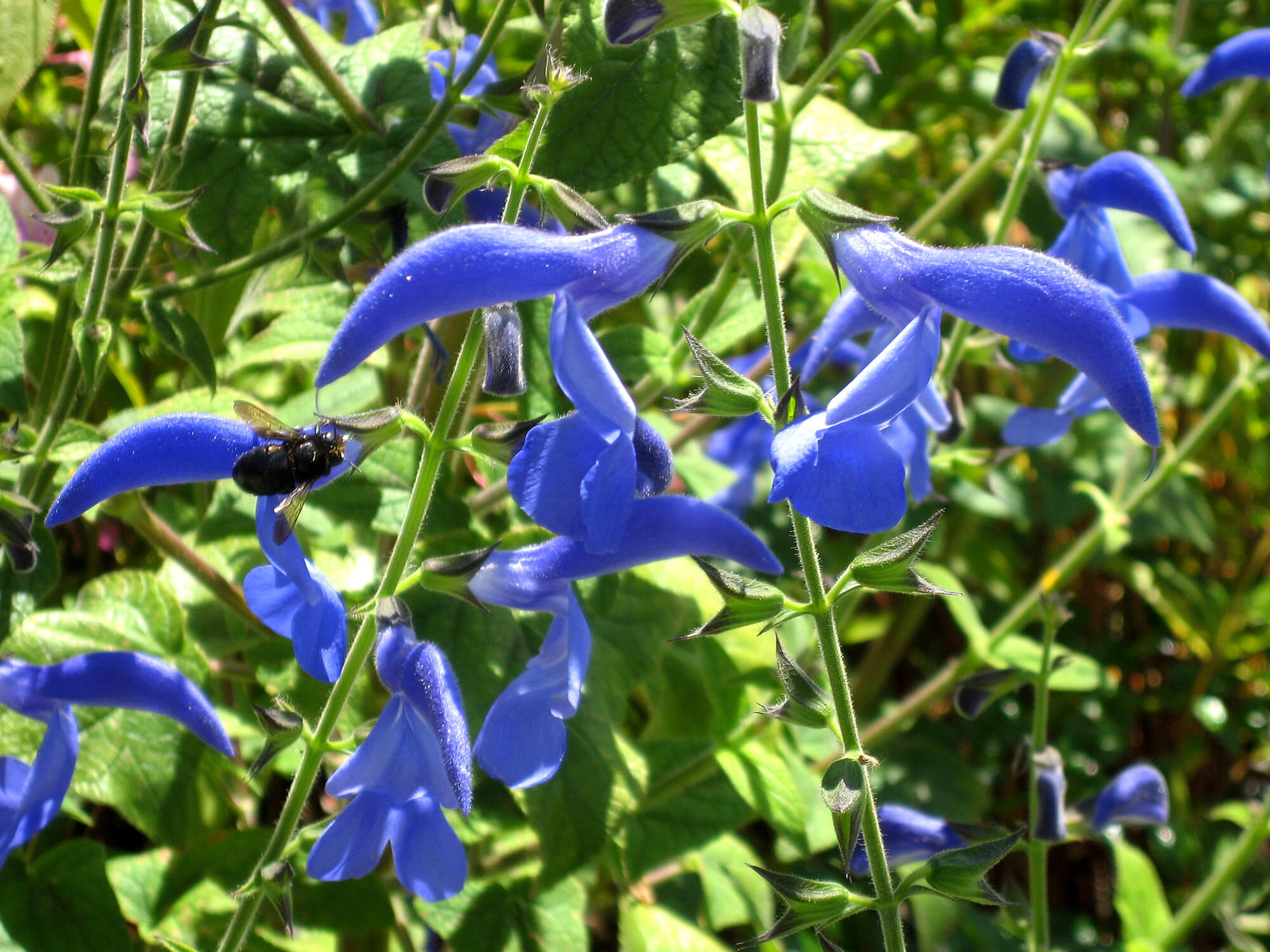 Which genus of plants is most important to California gardeners? My vote is for Salvia, the common sage. Not so much that other genera are unworthy of recognition, but as a group, salvias comprise a huge range of sizes, forms, colors and uses unequaled for Mediterranean gardens.
Which genus of plants is most important to California gardeners? My vote is for Salvia, the common sage. Not so much that other genera are unworthy of recognition, but as a group, salvias comprise a huge range of sizes, forms, colors and uses unequaled for Mediterranean gardens.
The entire spectrum of flower colors is represented from the pure white of S. apiana to the incredibly black S. discolor; and from the blighted-looking brown flowers of S. africana lutea to the intense blue racemes of S. uliginosa. The S. coccinea group provides some of the most eye-catching reds so attractive to hummingbirds. Even more exciting color selections are currently coming from the ever-variable S. greggii, which at last count here, was 59 varieties!
For a colonizing habit S. chamaedryoides is hard to beat. For winter flowers in The Bay Area S. leucantha is foolproof. For a tough and drought tolerant ground cover, you’ll find S. sonomensis. And for its culinary value S. officinalis can be grown in almost any conditions where drainage is adequate. Several sages can be grown in containers including S. coahuilensis, S. farinacea, S. microphylla grahamii ‘Red’ or ‘Purple’ and S. semi-atrata. Other salvias create showy mounds of color for dry hillsides, such as S. clevelandii or the hybrid ‘Bee’s Bliss’. One of the largest growing sages is Salvia gesnerifolia ‘Tequila’ which develops into a massive shrub covered with multitudes of showy red flowers surrounded by distinctive black bracts.
If you’re growing sages for the first time, most if not all attract bees. I welcome these visitors in my garden but people with young children or sting allergies may choose to avoid them. While not all salvias are perennial…most are looking their best by late summer.
Somewhere, somebody is reading this and saying “I can’t believe he didn’t mention Salvia (name one of thousands), it has been amazing in my garden”. Yes, it’s true; with so many to choose it seems like folly to mention only a handful. Look for an ample supply at the nursery in both 4 inch pots and one gallon size cans now, and if you need help planning for special conditions don’t hesitate to ask to ask for some sage advice.


